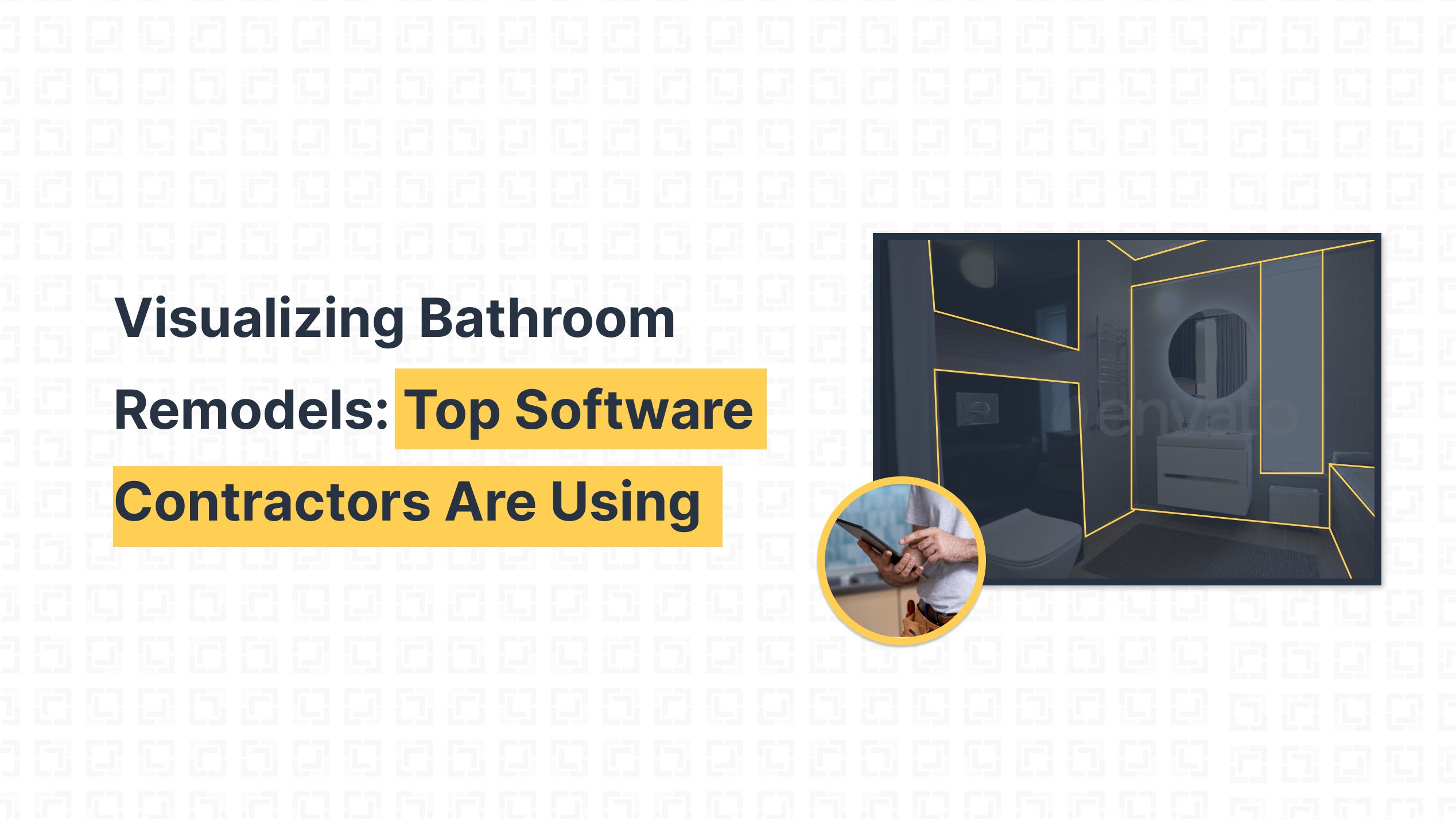Mastering Estimates: How to Quote a Remodeling Job Accurately
Get more clients by providing accurate and competitive estimates. Discover our step-by-step guide on how to effectively estimate a remodeling job.
Discover the programs that leading contractors use for rendering and visualizing bathroom remodels to impress clients and win bids.

Like most remodeling contractors, you are constantly seeking new strategies to boost productivity and efficiency. Using visualizers is one of the best ways to accomplish this. Before you even begin construction, visualizers enable you to help your customer see what the final product will look like. By letting potential customers see the finished product before any actual work is done, you can sell more remodel projects. Here are some strategies for selling bath remodels using visualizers:
Visualizers are a must-have tool for remodeling contractors, as they allow you to showcase and explain remodeling projects to clients engagingly and interactively. This software also helps streamline the estimating process by visually representing key features, making it easier for contractors to get an accurate estimate.
Contractors can also use visualizers to provide solutions for complex situations such as attic remodels and second-story additions. These visualizers allow customers to easily understand each design step with simple animation features and flexibility with design options. Utilizing these tools saves contractors time and increases efficiency and leads to improved customer satisfaction due to the clarity associated with viewing the entire project from beginning to end. Visualizers are ideal for the following trades:
Contractors looking to improve their businesses should consider visualizers as part of their toolkits. Visualizers help remodeling contractors create beautiful experiences for clients, simplify sales conversations, and enhance the quoting process. These tools help contractors to create 3D models to give customers a realistic view of what they can expect from their renovations.
3D visualizers, Augmented Reality (AR), and Virtual Reality (VR) are different technologies used in design and visualization:
One Click offers several powerful visualizer integrations, including DesignEyeQ and Renoworks – both are great options for remodeling contractors trying to maximize their sales efforts. Outside of One Click's platform are new state-of-the-art AI applications, such as REimagine, an application that redesigns any space by evaluating architectural elements, detecting room type, understanding preferred design styles, and adhering to your color preferences & text instructions.
When choosing 3D visualizers for bathroom remodels, consider these features:
Increase accuracy and reduce errors: Visualizers can also help increase accuracy and reduce errors by providing a more precise and detailed representation of a project. By seeing the proposed design in 3D, it can be easier to identify potential issues or areas requiring adjustments, allowing for greater accuracy and a more efficient design process.
Improve training and onboarding: Finally, visualizers can improve training and onboarding for new team members. By visualizing a project or process, new team members can more quickly and easily understand the workflow and their role in the project, leading to increased productivity and efficiency.
Here is a list of popular paid bathroom visualizer tools that you can use for your bathroom design and remodeling projects:
Here are some additional free bathroom design tools offered by various brands and retailers:
When selecting visualization software for bathroom remodels, it's essential to consider the scale of the project. More complex projects may require advanced features, while smaller remodels can be managed with basic tools.
Budget is another key factor; weigh the cost of the software against its benefits. The software should meet the specific needs and expectations of your clients, such as the demand for highly detailed renderings or simple layouts.
User experience is also crucial; if you're new to design, seek software with an intuitive interface and an easy learning curve. Consider collaboration features, especially if the project involves teamwork or client interactions. Choose a tool that supports efficient sharing and feedback processes.
If you’re not using a visualizer during the sales process, you could miss out on some easy sales. With a visualizer, you can show potential clients exactly what their homes will look like after completing your remodeling work. This increases productivity because it allows both parties to see the project through from start to finish before any work has even begun. Schedule a demo of One Click Contractor today to see how the platform could make a difference for your business.
Here are some additional visualization tools for remodeling contractors that help with everything from paint colors to roofing shingles.
Book a personalized demo of how One Click Contractor’s platform — powered by One Click Estimating and 1LOOK® Financing — helps contractors quote faster, fund instantly, and close more deals.
Get more clients by providing accurate and competitive estimates. Discover our step-by-step guide on how to effectively estimate a remodeling job.
One platform for all your remodeling needs. Our software simplifies both kitchen and bath projects from start to finish.
Discover how One Click Contractor can revolutionize your estimating process. Learn to create precise measurements, quick estimates, and professional...
Be the first to know about new B2B SaaS Marketing insights to build or refine your marketing function with the tools and knowledge of today’s industry.